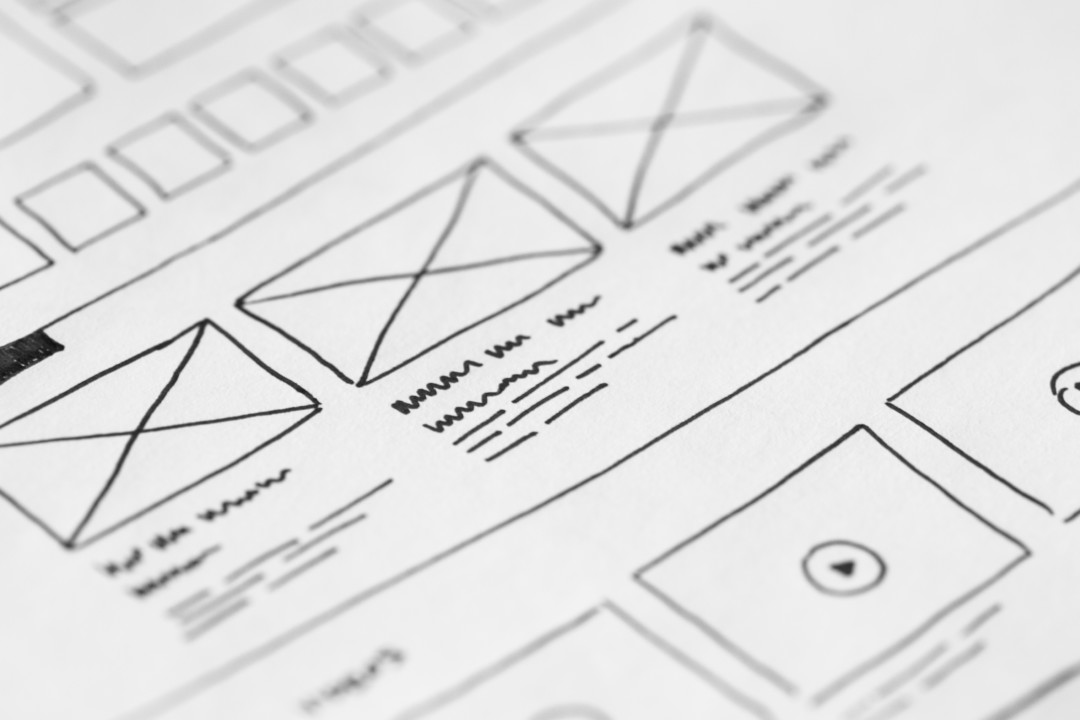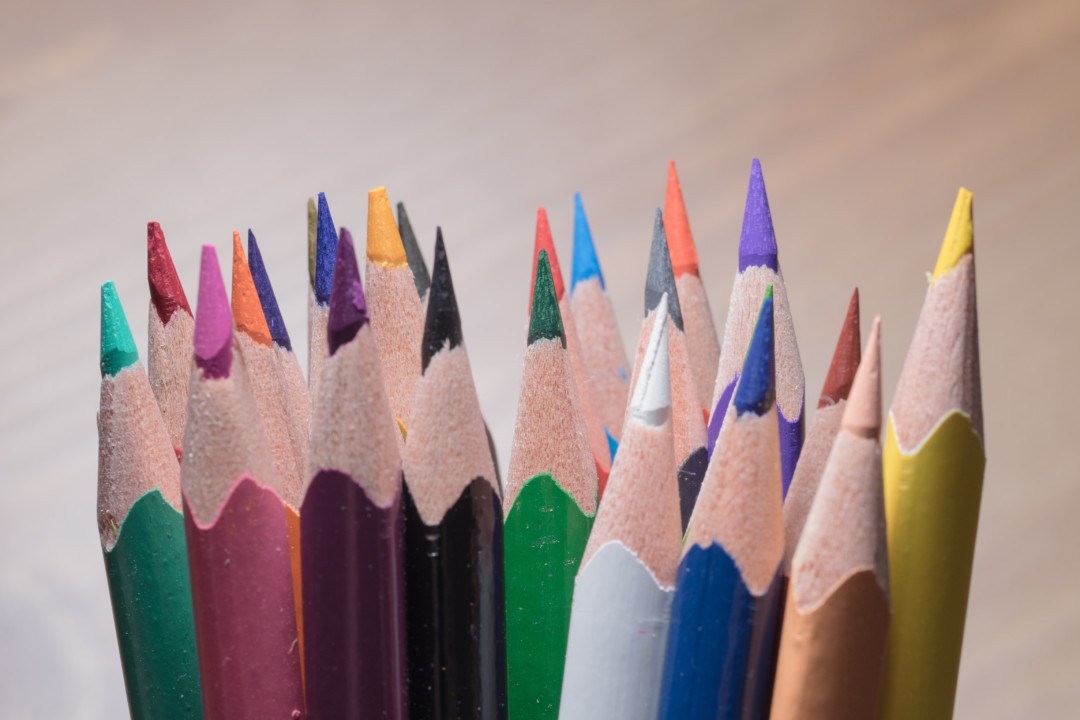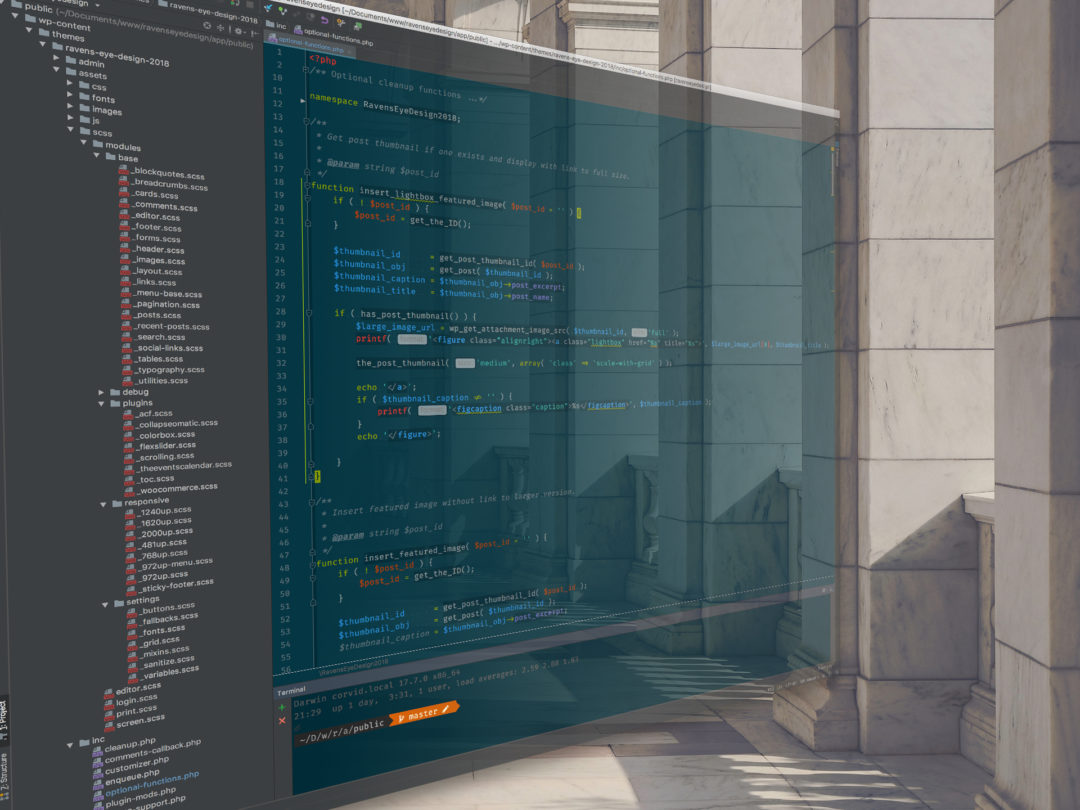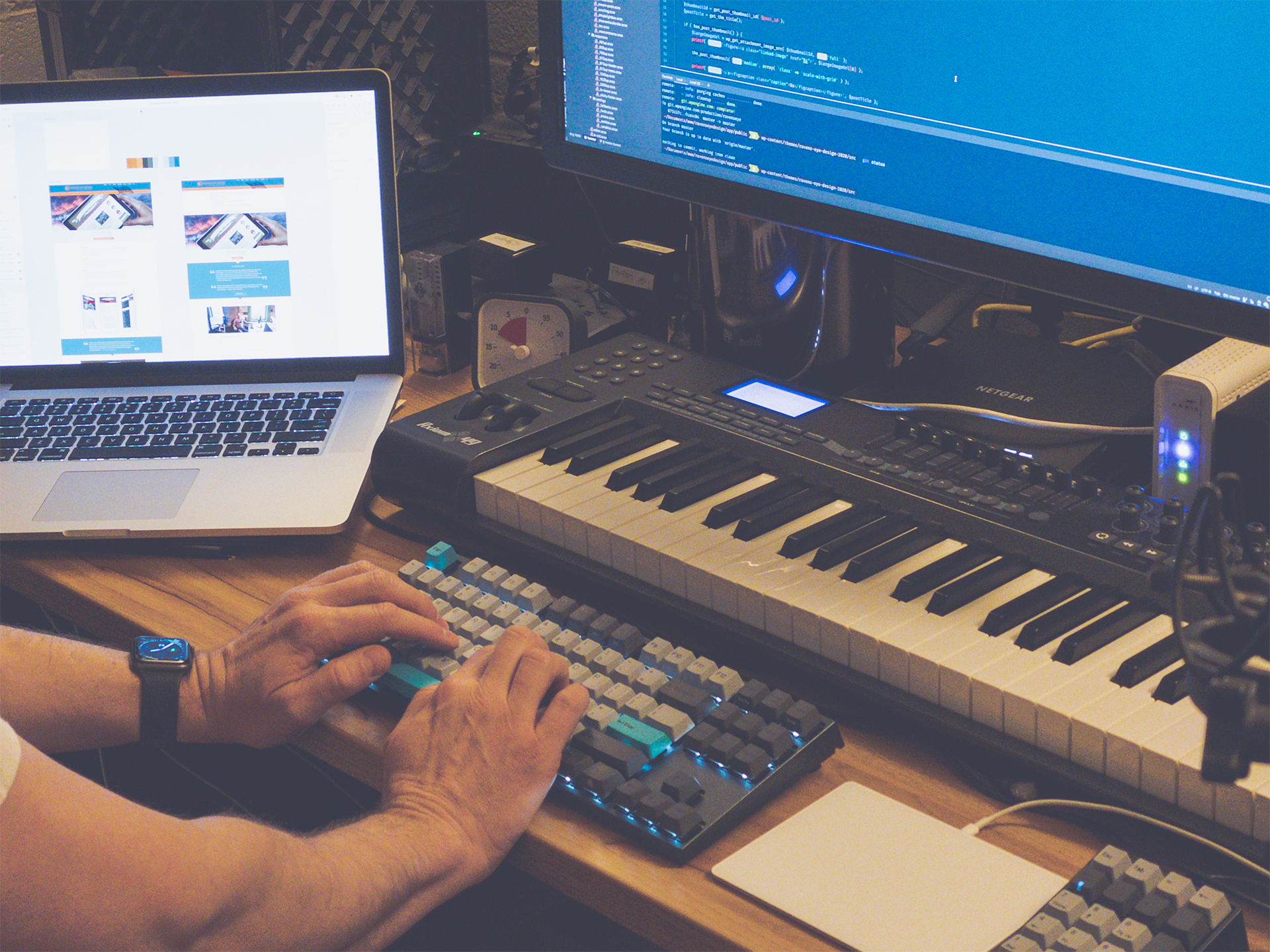Creating a custom website is an interactive process with specific steps. Here’s an overview of the website design process when working with Raven’s Eye Design.
Information architecture
During this phase of the project, we figure out broadly what information the website will contain and how it will be organized.
Does the website present information about your company? Does it provide an automated service to visitors? Is there an online store? Image galleries? The first step of the web design process involves figuring out the answers to these questions. We’ll determine how visitors might navigate the website and how they might interact with the content.

Wireframes, or simple line-based sketches, of the whole website might be useful to help complete this phase. I may complete a wireframe diagram showing what parts of the website exist and how they interconnect. Wireframes could even be a fully interactive, clickable mockup of the site navigation.
This phase of the website design process is not concerned with detailed content or graphic design. Separating the visual design and content creation from the overall information architecture leads to a better end result. It allows us to focus on each task fully before moving on to the next.
If it’s a redesign
If the project is a redesign of an existing website that already has a successful organization of information, we might forego wireframes. A simple website with a limited budget might also skip this phase. It’s always important to figure out the overall structure before moving forward.
Custom graphic design
Once we establish the website structure, the graphic design phase begins. A website that looks like hundreds of other websites is not going to stand out among competitors. Therefore, using a prefabricated cookie-cutter template does not lead to success in the same way that a custom design does.
A live website is a complex collection of code and a lot of moving parts. The most effective way to integrate a custom design into a website is to handle the graphic design part separately, while keeping the information architecture and desired user interface goals in mind.
During this website design process phase, I ask a lot of questions to learn about your company or organization. I’m interested in its specific goals. What marketing tactics have worked so far? What have not? Before I put pencil on paper, I try to determine how the look and feel of your website might help your company be most successful.
Using existing branding
If there’s existing branding, I’ll work with your graphic design team to get whatever logos, color palettes and typographic direction I might need to make the website consistent with the brand. If there’s not, we may include branding design and development in the project, or we may bring in other professionals to work with us, depending on the project.

I’ll create mockup images of the look and feel of components of the new website. These are static images, not live website pages, whose sole purpose is to convey the look and feel of the site. It’s easy and efficient at this phase to make revisions to the design as needed.
Once I send over the mockup images, we’ll talk about what works and what doesn’t work, and then I’ll edit the design mockups and send over new versions based on our conversations.
Once we arrive at a graphic design that everyone agrees is the most effective, we’ll sign off on it and I’ll start building the live website.
Custom website development
The custom graphic design and the information architecture are complete, and now we’re free to focus on putting it all together to make a live website.
I write programming code and build things on my development web server, so if you have a website it’ll stay live until the new one is done. There’s no reason to have any website downtime during the redesign process.
Bespoke user interfaces
Most businesses and organizations have unique needs when it comes to the most efficient and effective way to put information on their websites. If your businesses a restaurant, it might have a menu with different types of dishes. An online clothing store might have specific types of clothing to display in different ways.
During the development phase of the project, I’ll build custom-coded user interfaces to enable you and your team to make edits to exactly what you need in the most efficient and simple way possible. This approach can save hours of work for your business or organization for years to come.
Using prefab website systems can’t come close to offering this, since they’re made to be all-in-one control panels for everyone in the world to use. It’s like the difference between a budget one-size-fits all jumpsuit and a bespoke tailored suit.

During the development phase of the website design process, I’ll share ideas based on my years of experience building websites for how best to tailor the content management system to your needs.
I’ll launch a beta version of the finished website and lock it from public view so we can review everything and test it before live launch. Then, once everything is ready, I’ll launch the new website. If there was a previous site with the same domain name, it’ll blink out as the new one blinks into being.
Quality website hosting
A website hosting service puts and keeps your website online. The quality of the hosting service is vitally important. I’ll launch your site on one of my recommended hosting partners, such as WP Engine. They’ll handle important things like nightly backups, security and making it easy to set up secure server layer (SSL) certificates, among other things.
